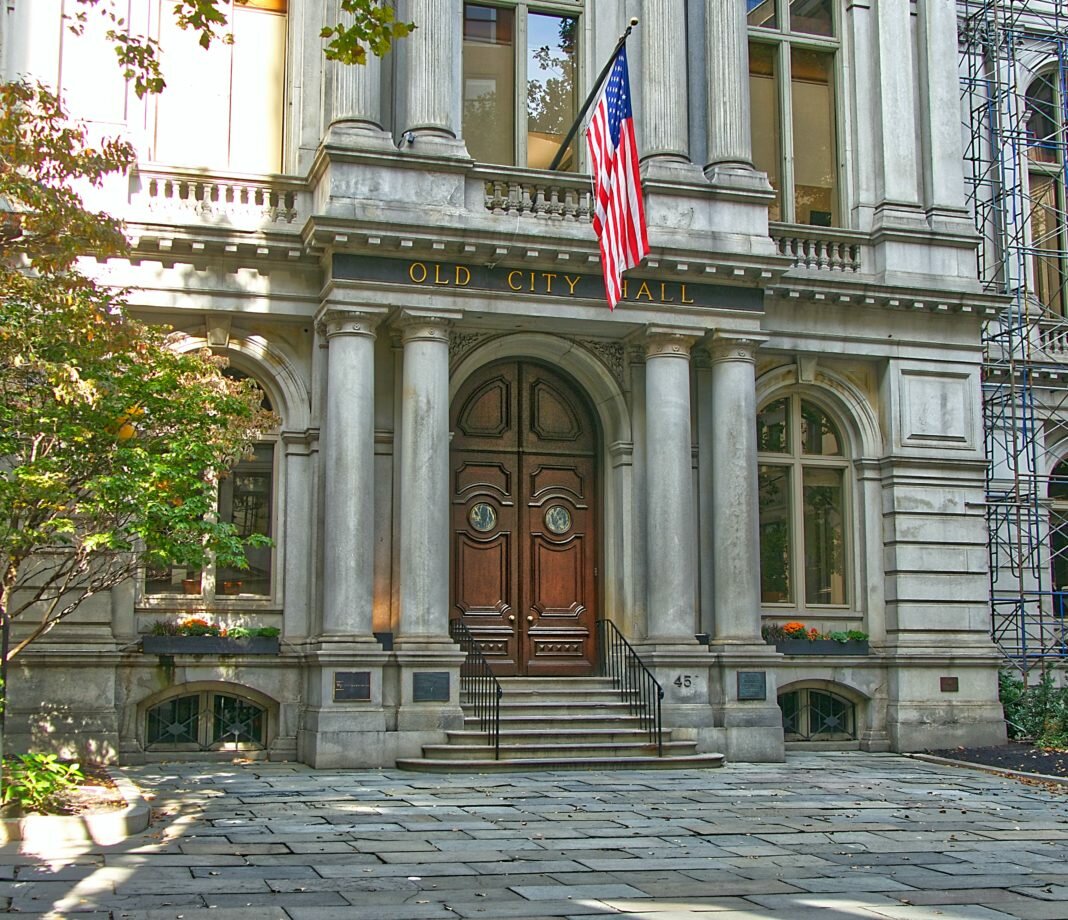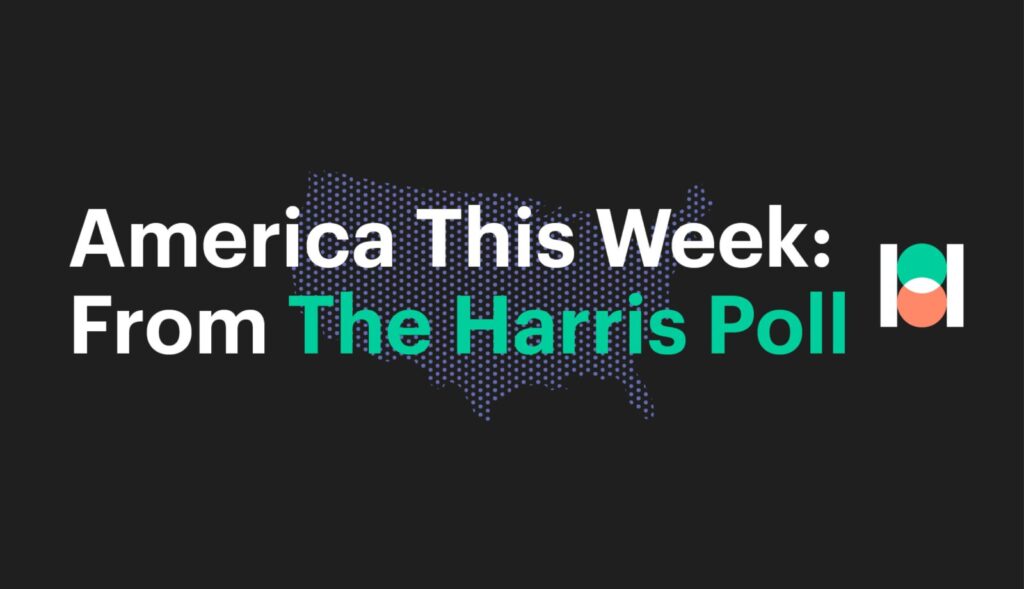Brief • 5 min Read

Research by The Harris Poll and the Chicago Council on Global Affairs conducted in November 2020, surveying residents of America’s largest metropolitan areas about their perspectives on urban living and the condition of their cities, reveals that metropolitan residents are still invested in the well-being of their cities despite the impact of the COVID-19 pandemic.
The pandemic has exacerbated many issues that were already primary city concerns, such as the cost of living, public safety, and climate change, to name a few. Examining big-city resident perspectives on the effectiveness of government in such situations and their faith in the government to accomplish those changes can point local leaders to the role that urban dwellers would like their government to play in a post-COVID society.
Assessing current government performance
Overall, local governments are viewed as more capable of governance than higher levels of government. Residents in American’s largest cities agree that their city’s elected leaders are more capable of governing than Congress (63%), the President (62%), and state-elected officials (56%).*
Moreover, just over half disagree that their city’s elected leaders play politics more than the President (52%), state-elected officials (52%), and Congress (55%).
Such approval is further reflected in the strong majority who also agree that services in their city, like sanitation, the fire department, and public transportation, are delivered sufficiently (78%).
Handling an ongoing pandemic
Three in five big-city residents say they are most concerned about COVID-19 in their city. However, just 38% of these residents say they are very or extremely confident in their mayor’s ability to effectively respond to the pandemic. This confidence aligns with reality, matching the share of those who say city leadership — namely the mayor (39%) and other county or regional officials (35%) — have been effective at addressing the pandemic.
In fact, these residents express greater approval for how higher levels of government have handled the pandemic. Specifically, these residents give higher effectiveness ratings to their state’s governor (47%) and the Centers for Disease Control and Prevention (45%).
It is unsurprising, then, that metropolitan residents would prefer the local government take a back seat in handling the pandemic. Just 15% would prefer to see city-elected officials take the lead on responding to COVID-19. On the other hand, nearly half (49%) would like to see nationally elected officials lead, and another quarter (24%) would prefer state-elected officials take the lead.
Keeping urban living affordable
Issues related to the cost of living and the economy are the second most-pressing concerns for metropolitan residents. More specifically, these residents say they are most concerned about taxes and fees (41%), the economy (39%), housing (21%), and economic inequality (18%) in their respective cities. Such financial concerns were especially high among those living in New York and Chicago, regions known for high costs of living.
Currently, nearly half of all metropolitan residents do not think there is enough affordable housing in their respective cities (49%). Of those in this group, 86% support the creation of additional affordable housing options in their city while 85% those who support more affordable housing in their city also support its construction in their neighborhoods.
With specific regard to the cost of living, just 31% of metropolitan residents are very or extremely confident in their mayor’s ability to keep housing affordable in their city. However, more than half (54%) say their mayor has been effective at addressing the affordability of housing. About the same share (52%) also say that their mayor has been effective at addressing economic inequality.
Despite most metropolitan residents approving of local government efforts to control the cost of living, the largest plurality actually would prefer that state-elected officials take the lead on affordable housing (33%) while another 22% would prefer nationally elected leaders take the lead. That said, 29% still feel it is the responsibility of local government to take the lead on affordable housing.
Resolving racial injustice
Heavily tied to a fair cost of living is equal treatment for city residents. Many of those living in America’s largest cities also say that they are most concerned about public safety (30%) and racial equity (24%) where they live.
Large metropolitan areas often are witnesses to many instances of discrimination related to policing. Consequently, protests regarding social justice and resident maltreatment by police were increasingly common occurrences during the summer of 2020 after the death of George Floyd.
Currently, residents living in large metropolitan areas are fairly divided on their concern about social unrest in their city. Forty-nine percent say they are concerned while 51% say they are not.
For those who express concern, more than three in five say they are concerned about social unrest in their own neighborhoods. Such concerns are especially pronounced among those living in downtown areas (71%) and the New York (65%) and Los Angeles (70%) areas where summer protests were more frequent.
Just a third of all big-city residents (34%) say they are very or extremely confident in their mayor’s ability to respond to the recent protests about racism and policing. However, these residents show overwhelming approval for how local and state leadership have handled protests over racism and policing. More specifically, these residents say their city’s mayor (63%), their city’s police or county’s sheriff department (63%), their state governor (60%), and their other county or regional officials (54%) have been effective at addressing the protests over racism and policing.
For New York and Los Angeles, whose residents express the greatest concern about unrest in their own neighborhoods, three in five also say that their local officials have been effective at addressing these protests. This is especially surprising given just 27% of Los Angeles residents say they are very of extremely confident in their mayor’s ability to respond to the recent protests about racism and policing.
Even with such approval of local officials, just a quarter of metropolitan residents would prefer city elected officials take the lead on handling protests about racism and policing (27%). The largest plurality of metropolitan residents still would prefer that nationally elected officials take the lead (35%). Those preferring state-elected officials also managed to edge out those preferring city leadership at 28%.
Houston, Texas, was the only city to deviate from this trend. The largest plurality (33%) say they would prefer the leadership of city-elected officials when handling protests about racism and policing.
Upon assessing perspectives on racial justice, in addition to the pandemic response and cost of living, a trend starts to appear: current effectiveness is not enough to persuade residents that city governments should lead on key local issues.
Creating greener cities
The well-being of the environment and human-influenced climate change are important issues for those living in and near large cities. Most metropolitan residents say cities should be doing more to combat climate change (56%). In fact, a quarter of these residents (24%) say they are most concerned about the environment and climate change in their respective cities.
Assessing government performance
Overall, residents are fairly divided on assessing how government has addressed climate change. Forty-nine percent say their mayor has been effective at addressing climate change. This may be surprising given only 29% of residents are very or extremely confident in their mayor’s ability to address climate change.
In fact, other county or regional officials (49%), the local parks and recreation department (55%), and even the state governor (50%) are viewed as more effective at addressing climate change compared to the mayor.
Given this middling sense of local effectiveness, most metropolitan residents (51%) want nationally elected officials to take the lead on climate change.
Transportation as a potential solution
Advocates working to reduce and reverse human-influenced climate change in cities often propose transportation alternatives as a viable solution. Areas where many residents drive private vehicles are perfect for experimenting with alternative transportation solutions. Employees are often the most frequent users of private transportation. Encouraging this group to consider alternative transportation more often would help reduce pollution across cities.
However, most of these employed residents are not willing to consider public transit (53%), bicycles or electric bikes (58%), or electric scooters (63%) for their commutes. Common reasons for such hesitance include COVID and personal safety concerns as well as the additional time spent commuting.
Despite a general lack of interest in commuting alternatives, metropolitan residents still want to make sure infrastructure is in place for these alternatives. Three-quarters (77%) support additional infrastructure for bicycles and other very small vehicles. Many also support more infrastructure for private transport, including the construction of additional highways (64%) and widened roads (75%).
Read more on transportation perspectives here.
iNTERNATIONAL COLLABORATION
With large cities around the world pushing for and implementing strategies to mitigate human-influenced climate change, large American cities also have the opportunity to collaborate internationally on such goals. In fact, most residents support such action with 58% saying it’s very or extremely important that their city engage internationally with other cities and governments to address climate change.
Involvement in immigration policy
Two in five big city residents say that issues in their city or metropolitan area are very or extremely affected by global events or trends like immigration patterns. It’s unsurprising, then, that perspectives on international collaboration extend to other topics, such as immigration. Although immigration policies are still dictated by the federal government, some large American cities have worked to develop their own approach to immigration separate from national government.
For example, some large metropolitan areas like Los Angeles have also become known as sanctuary cities for their more forgiving approach to certain immigrants compared to the federal government. Additionally, Chicago’s Welcoming City Ordinance aims to make Chicago the most immigrant-friendly city in the country by ensuring the Chicago Police Department cannot cooperate with U.S. Immigration and Customs Enforcement (ICE). Although Philadelphia does not consider itself a “sanctuary city,” it does officially define itself as a “Welcoming City.” This means that city does not allow its employees, including police officers, to ask about the documentation status of people they encounter. However, the city will still support and collaborate with federal law enforcement and follow judicial orders and warrants.
Most residents generally agree their cities should be allowed to dictate some of their own immigration policies, and more specifically, in collaboration with cities outside the U.S. Eighty-six percent say it is at least somewhat important that their city engage internationally with other cities and governments on immigration; 57% say it is very or extremely important for their city to do so.
Cities near the Southern U.S. border show greater support of international collaboration with those in the Houston (68%), Phoenix (60%), and Los Angeles (55%) areas saying it is very or extremely important for their city to engage internationally with other cities and governments on immigration.
That said, most metropolitan residents say that cities should not have the power to develop immigration policies that differ from federal policies (56%). However, L.A. residents disagree with this: 53% say that cities should have the power to develop their own policies. Out of all the metropolitan areas surveyed, Los Angeles was the only city to take this position.
What is the role of local government post-pandemic?
Although local leadership is often deemed at least somewhat if not highly effective at handling key issues including the COVID-19 pandemic, the economy, racism and policing, and the environment, most residents in America’s largest cities still expect higher levels of government to set the agenda. That said, they do support their cities taking greater agency to resolve climate change and immigration — even it may mean going beyond what the federal government has suggested.
Newly inaugurated administrations across the country coupled with a once-in-a-generation health crisis have forced local governments to reevaluate their efforts. During this time of social and economic reckoning, cities have a chance to prove they can lead at solving some the nation’s most pressing issues. By building on their existing perceptions of competence to help boost confidence in local leadership, city governments can create the environments that will help their citizens thrive long after the pandemic has ended.
*The U.S. president at the time of this study was Donald Trump.
Methodology
This survey was conducted online within the United States between November 5, 2020, and November 16, 2020, among 1,200 adults (aged 18 and over) by The Harris Poll on behalf of the Chicago Council on Global Affairs. The respondents surveyed were evenly divided among six U.S. metropolitan regions: New York City, Los Angeles, Chicago, Houston, Philadelphia, and Phoenix. Respondents self-identified the community type (i.e., central city/downtown, inner suburb, outer suburb/exurb, and rural) in which they lived. Figures for age, sex, race/ethnicity, education, region, and household income were weighted where necessary to bring them into line with their actual proportions in the population. Propensity score weighting was used to adjust for respondents’ propensity to be online.
All sample surveys and polls, whether they use probability sampling, are subject to multiple sources of error which are most often not possible to quantify or estimate, including sampling error, coverage error, error associated with nonresponse, error associated with question wording and response options, and post-survey weighting and adjustments. Therefore, the words “margin of error” are avoided as they are misleading. All that can be calculated are different possible sampling errors with different probabilities for pure, unweighted, random samples with 100% response rates. These are only theoretical because no published polls come close to this ideal.
Respondents for this survey were selected from among those who have agreed to participate in our surveys. The data have been weighted to reflect the composition of the adult population of each metropolitan area. Because the sample is based on those who agreed to participate in the online panel, no estimates of theoretical sampling error can be calculated.
Responses in this survey were tested for statistical significance using a Z-test with a confidence level of 95% and a Z-test with a confidence level of 90%. For more information on methodology, please contact Dami Rosanwo.
To explore more insights from our Future of Cities research, click here.
Subscribe for more Insights
Subscribe to our newsletter for the latest trends in business, politics, culture, and more.
Download the Data
Get the full data tabs for this survey conducted online within the United States by The Harris Poll on behalf of the Chicago Council on Global Affairs between November 5, 2020, and November 16, 2020, among 1,200 adults (aged 18 and over).
Download
Subscribe for more Insights
Subscribe to our newsletter for the latest trends in business, politics, culture, and more.
Download the Data
Get the full data tabs for this survey conducted online within the United States by The Harris Poll on behalf of the Chicago Council on Global Affairs between November 5, 2020, and November 16, 2020, among 1,200 adults (aged 18 and over).
DownloadRelated Content








